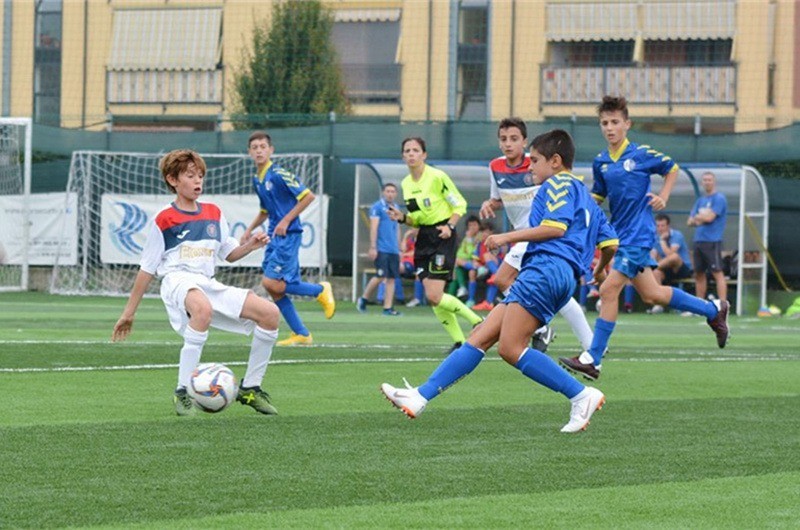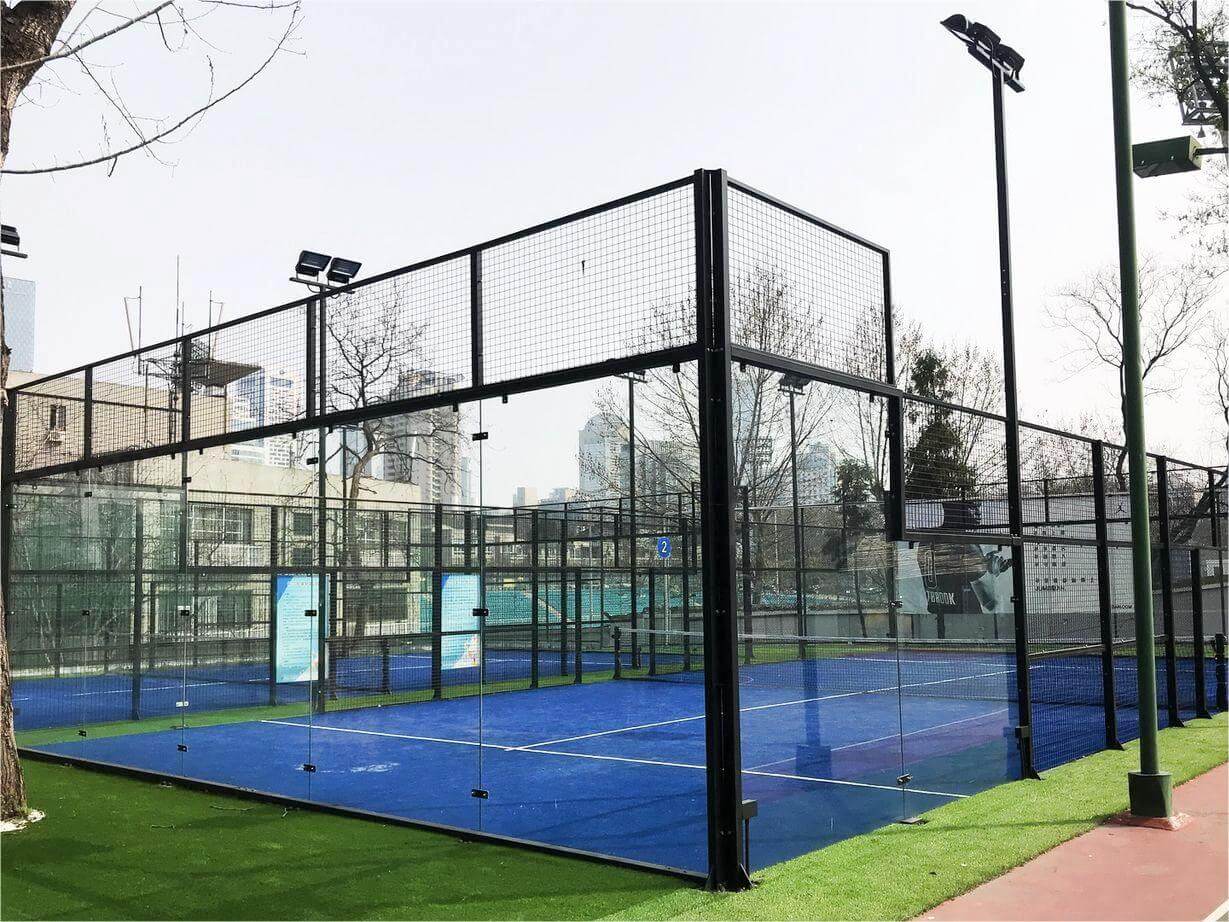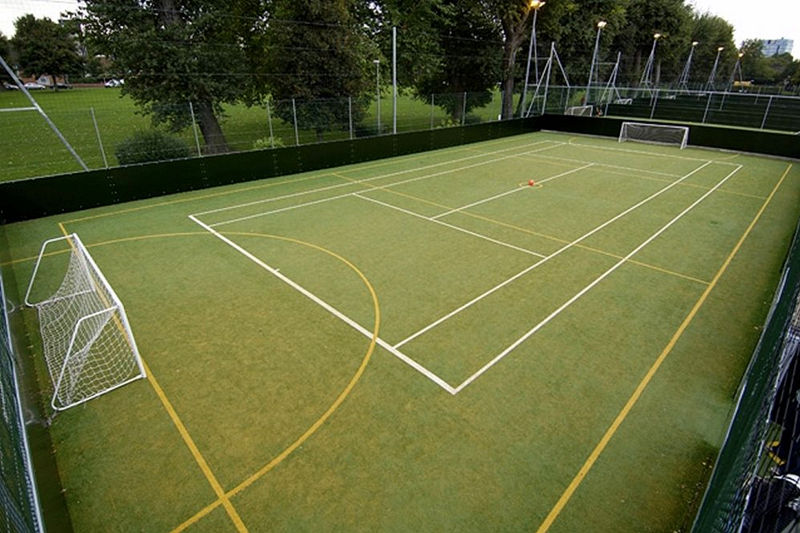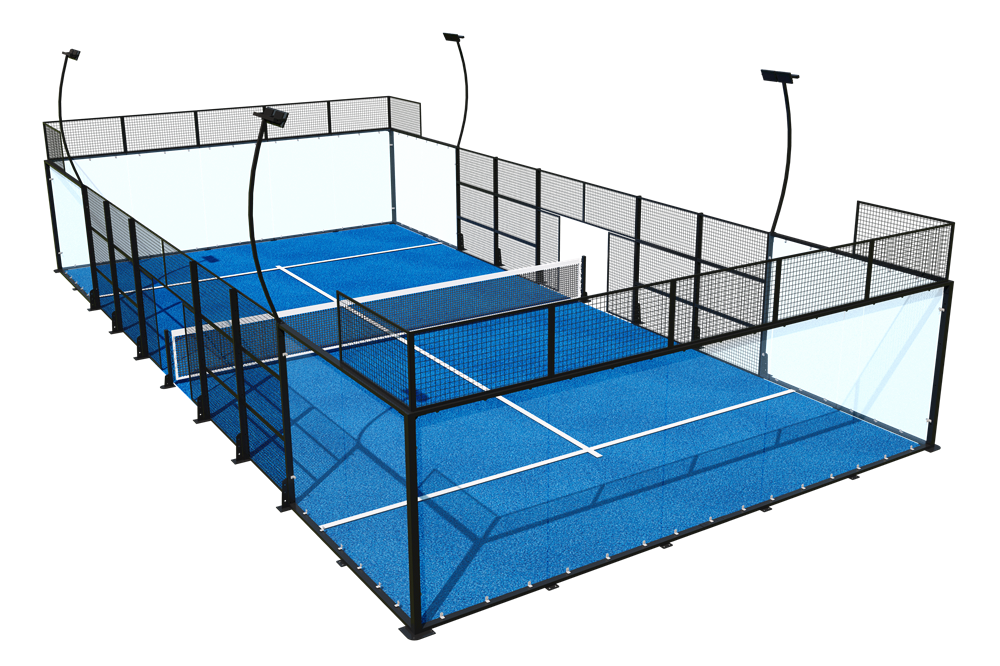Una iluminación adecuada es uno de los elementos más importantes en cualquier instalación de pádel. Ya sea para torneos competitivos o partidos informales nocturnos, una iluminación adecuada garantiza la seguridad de los jugadores, un rendimiento constante y una mejor experiencia general tanto para jugadores como para espectadores.
Tabla de contenido
- La norma europea: EN 12193
- Clases de iluminación para pádel
- Requisitos de iluminación para pistas de pádel
- Por qué es importante una iluminación uniforme
- Consideraciones sobre canchas cubiertas
- Consideraciones sobre canchas al aire libre
- Por qué los LED son la mejor opción
- ¿Debe ir más allá del mínimo?
- Avanzando con su proyecto
La norma europea: EN 12193
En Europa, la iluminación de las instalaciones deportivas está regulada por EN 12193: Luz e iluminación – Iluminación deportiva, que también se aplica al pádel. La norma establece requisitos para:
Asegúrese de tener una visibilidad clara para un juego de ritmo rápido
Apoyar un rendimiento visual consistente durante los partidos
Proporcionar una visualización cómoda para los espectadores.
Reducir el deslumbramiento y la contaminación lumínica en las áreas circundantes
Aunque el pádel comparte similitudes con el tenis, su Diseño de cancha cerrada y paredes de vidrio La iluminación debe planificarse cuidadosamente para evitar reflejos y deslumbramientos.
Clases de iluminación para pádel
La norma EN 12193 divide la iluminación deportiva en tres categorías principales según el nivel de competición y el uso de las instalaciones:
Clase I – Competición de alto nivel
Para torneos nacionales e internacionales no transmitidos por TV
Áreas de espectadores más grandes con largas distancias de visualización
Requisitos de iluminación máximos para seguir la pelota con claridad a gran velocidad
Clase II – Competiciones de clubes y entrenamiento avanzado
Adecuado para torneos regionales y eventos a nivel de club.
Distancias medias para espectadores
Común para instalaciones donde se llevan a cabo juegos competitivos y entrenamiento avanzado.
Clase III – Juego y práctica recreativa
Para partidos locales, sesiones de entrenamiento y juegos de ocio.
Mínimo o nulo público
El enfoque se centra en la participación segura más que en la competencia profesional.
Requisitos de iluminación para pistas de pádel
Los valores de iluminación del pádel son similares a los del tenis, pero con ajustes para jugar en interiores y exteriores.
| Clase | Canchas al aire libre | Canchas cubiertas | Relación de uniformidad |
|---|---|---|---|
| I | 500 lux | 750 lux | 0.7 |
| II | 300 lux | 500 lux | 0.7 |
| III | 200 lux | 300 lux | 0.5 |
Notas:
Lux Mide la iluminancia horizontal en la superficie de juego.
los relación de uniformidad muestra qué tan uniformemente se distribuye la luz (por ejemplo, 0,7 significa que el punto más oscuro tiene al menos 70% de la iluminación promedio).
Por qué es importante una iluminación uniforme
La iluminación desigual obliga a los ojos de los jugadores a ajustarse constantemente entre zonas brillantes y oscuras. Esto puede causar:
fatiga visual
Tiempos de reacción más lentos
Dificultad para seguir la pelota, especialmente después de rebotar en paredes de vidrio.
Imagínese conducir de noche bajo una iluminación irregular: el ajuste constante reduce la visibilidad. Un sistema de iluminación de pádel bien diseñado elimina sombras y deslumbramientos, creando una iluminación uniforme en toda la pista.
Consideraciones sobre canchas cubiertas
Las pistas de pádel cubiertas suelen beneficiarse de la iluminación existente en el pabellón deportivo. Sin embargo, si la luz ambiental es insuficiente, se puede requerir iluminación adicional. Luminarias LED Puede ser necesario.
Aspectos técnicos importantes:
La posición de los accesorios y los ángulos del haz deben calcularse cuidadosamente
Las alturas de montaje y las superposiciones influyen en los niveles de lux
A estudio fotométrico garantiza el cumplimiento y evita el desperdicio de energía
La ventaja de las instalaciones en interiores es sencilla: la energía y la infraestructura de montaje suelen estar ya disponibles.
Consideraciones sobre canchas al aire libre
Las pistas de pádel al aire libre amplían el horario de juego hasta la noche, pero requieren atención a:
Impermeabilización:Los accesorios deben soportar la lluvia, la humedad y los cambios de temperatura.
Durabilidad:La resistencia a las cargas de viento y a la corrosión es fundamental.
Control de luz:Cómo evitar el deslumbramiento, la dispersión de luz y las perturbaciones en el vecindario
Reglamento:Cumplimiento de las normas locales sobre contaminación lumínica
Afortunadamente, las canchas al aire libre generalmente requieren menos lux que las instalaciones interiores, ya que el crepúsculo o las luces circundantes pueden contribuir.
Por qué los LED son la mejor opción
La tecnología LED se ha convertido en el estándar claro para la iluminación de pistas de pádel porque ofrece:
Inicio instantáneo (sin tiempo de calentamiento, a diferencia del haluro metálico)
Eficiencia energética:40–60% menor consumo para la misma potencia
Larga vida útil:Menos reemplazos, menos tiempo de inactividad
Mejor reproducción del color:La bola amarilla se destaca más claramente
Control de haz de precisión:La luz se dirige hacia la cancha, no se desperdicia afuera
Para nuevos proyectos o actualizaciones, el diseño LED profesional garantiza el cumplimiento de la norma EN 12193 y al mismo tiempo minimiza los costos operativos a largo plazo.
¿Debe ir más allá del mínimo?
Muchos clubes optan por superar los requisitos básicos. Por ejemplo, las canchas recreativas suelen adoptar Iluminación de clase II en lugar de clase IIILas razones incluyen:
Visibilidad más nítida y mayor disfrute del jugador
Un ambiente premium que justifica tarifas de alquiler más altas
Mejores condiciones para la celebración de eventos o torneos
Mayor satisfacción y retención de clientes
Las mejoras de iluminación pueden amortizarse rápidamente gracias a un mayor uso de la cancha y la lealtad de los jugadores.
Avanzando con su proyecto
El diseño de una iluminación eficaz para pistas de pádel es un equilibrio entre:
Cumplimiento (cumple con las normas EN 12193)
Rendimiento (luz uniforme y visibilidad)
Eficiencia (ahorro de energía y durabilidad)
Experiencia (comodidad y satisfacción del jugador)
Antes de invertir, se recomienda encarecidamente:
Trabajar con un diseñador especializado en iluminación deportiva
Solicitar una informe fotométrico para las dimensiones de su cancha
Tenga en cuenta las normas locales sobre contaminación lumínica e impacto ambiental
Con el diseño adecuado, sus canchas de pádel ofrecerán excelentes condiciones de juego de día o de noche, manteniendo a los jugadores seguros, comprometidos y ansiosos por regresar.




